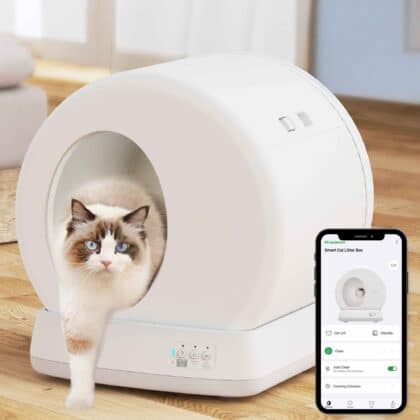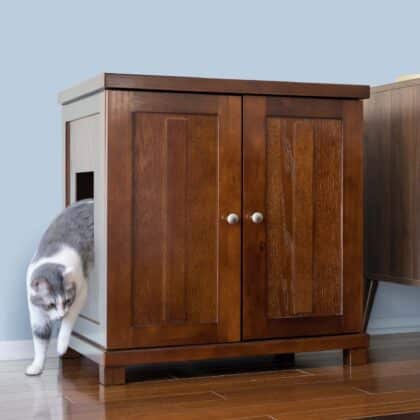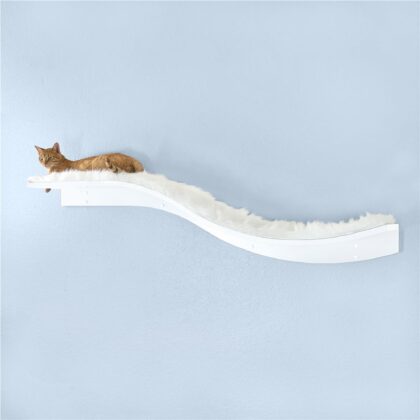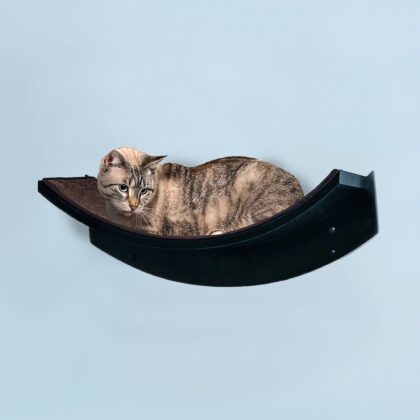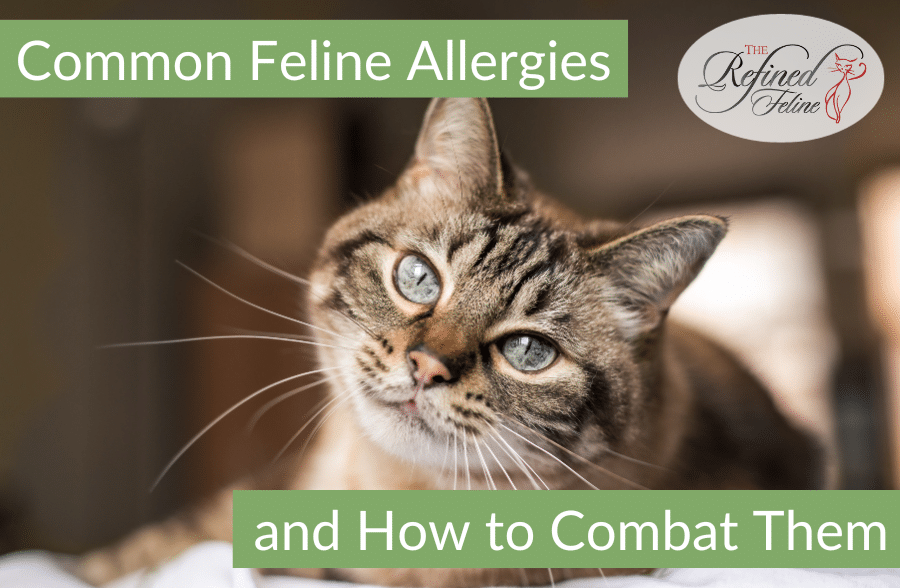
Common Feline Allergies and How to Combat Them
Allergies in cats can be as uncomfortable and frustrating for them as they are for us. Just like humans, cats can suffer from a variety of allergies, which can affect their quality of life. Understanding these allergies and knowing how to manage them is crucial for any cat owner. In this article, The Refined Feline will explore the common types of feline allergies and provide tips on how to combat them effectively.
Types of Feline Allergies
Allergies occur when a cat’s immune system overreacts to foreign substances or allergens. These can range from environmental factors to food. The most common types of allergies in cats include:
- Flea Allergies
Flea allergy dermatitis (FAD) is the most common allergic condition in cats. It is not caused by the fleas themselves, but by an allergic reaction to flea saliva.
Symptoms: Look out for excessive scratching, red and inflamed skin, hair loss, and scabs. These are usually seen around the neck and back.
Combat Tips: Regular flea control is crucial. Use vet-recommended flea treatments and ensure that your home, including all pets, is treated regularly to prevent flea infestations.
- Environmental Allergies
Also known as atopy, environmental allergies are caused by airborne allergens like pollen, mold, or dust mites.
Symptoms: Sneezing, coughing, scratching, watery eyes, and skin irritation.
Combat Tips: Use air purifiers to keep the air clean, wash your cat’s bedding regularly, and vacuum often using a HEPA filter. Limiting your cat’s exposure to known allergens can also help.
- Food Allergies
Cats can develop allergies to specific ingredients in their food. The most common allergens are proteins from beef, dairy, and fish.
Symptoms: Gastrointestinal symptoms such as vomiting and diarrhea, along with skin problems like itching and hair loss.
Combat Tips: Conduct a food elimination diet under the guidance of your veterinarian to identify the allergen. Then, avoid feeding your cat foods containing that allergen.
- Contact Allergies
These are the least common and occur when a cat has a reaction to substances they come in contact with, such as certain fabrics or cleaning products.
Symptoms: Skin irritation at the point of contact, itching, and redness.
Combat Tips: Identify and remove the offending substance. Use hypoallergenic materials for bedding and avoid using strong chemicals or cleaners around your cat.
Diagnosing Feline Allergies
A proper diagnosis is essential for effective treatment. If you suspect your cat has an allergy, consult your veterinarian. They may recommend:
- Skin or Blood Tests: To identify environmental or flea allergies.
- Food Trials: For diagnosing food allergies, involving switching to a diet with different ingredients than the current food.
Management and Treatment
Managing allergies involves both medical treatment and changes in the cat’s environment or diet.
- Medication: Depending on the type of allergy, your vet may prescribe antihistamines, corticosteroids, or other medications to control inflammation and itching.
- Hypoallergenic Diet: For food allergies, feeding a hypoallergenic diet, as recommended by your vet, can be effective.
- Regular Grooming: Regular baths can help remove allergens from the cat’s skin and coat. Use a gentle, hypoallergenic shampoo.
Prevention Tips
Prevention is always better than cure, especially when it comes to allergies.
- Maintain a Clean Environment: Regular cleaning can reduce the presence of allergens like dust and pollen in your home.
- Flea Prevention: Consistent flea control is crucial in preventing flea allergy dermatitis.
- Quality Diet: A balanced diet strengthens the overall health of your cat, making them less prone to allergic reactions.
Creating a Comfortable Environment for Allergic Cats
For cats with allergies, comfort is key. Providing a clean, allergen-free space is crucial. Consider investing in cat furniture that is easy to clean and made of hypoallergenic materials. Products from The Refined Feline offer stylish yet practical solutions that can help create a safe haven for your allergic cat.
For example, their Lotus Cat Tower not only provides a place for cats to play and relax away from potential floor-level allergens but also features a sleek, modern design that’s easy to clean and maintain.
Related: Enhance Your Cat’s Lifestyle: A Guide to Feline Well-being
Understanding the Role of Stress in Feline Allergies
Stress can often exacerbate allergy symptoms in cats. Just like humans, cats can become stressed by changes in their environment, routine, or even by sensing stress in their owners. Managing your cat’s stress levels is thus an integral part of managing their allergies.
- Create a Stress-Free Environment: Maintain a routine to give your cat a sense of security. Provide safe spots where they can retreat when overwhelmed.
- Interactive Play: Engaging in regular play can help reduce stress in cats. Use toys that stimulate their natural hunting instincts.
Holistic Approaches to Managing Allergies
In addition to medical treatments, holistic approaches can be beneficial in managing feline allergies. These include:
- Dietary Supplements: Supplements such as omega-3 fatty acids can help improve skin health and reduce allergic reactions.
- Regular Brushing: This not only helps to keep your cat’s coat free of allergens but also serves as a stress-relieving activity for both you and your cat.
Monitoring and Ongoing Care
Effective management of allergies requires ongoing observation and care. Regular monitoring of your cat’s condition will help you notice any changes or improvements:
- Keep a Symptom Diary: Track your cat’s symptoms, diet, and environment to identify potential triggers or improvements over time.
- Regular Vet Visits: Regular check-ups are crucial to assess the effectiveness of the allergy management plan and make any necessary adjustments.
Creating an Allergy-Friendly Home
Making your home allergy-friendly for your cat involves more than just cleanliness. It’s about considering the materials and products you use:
- Use Hypoallergenic Cleaning Products: Choose cleaning products that are free from harsh chemicals and fragrances that could irritate your cat.
- Air Quality: Consider using an air purifier to reduce airborne allergens in your home.
Living with Allergies: A Happy Cat Life
While allergies in cats can be challenging, with proper management, they can lead full and happy lives. Regular vet check-ups, a clean living environment, and a suitable diet can make a significant difference. And remember, providing a comfortable and safe space for your cat to retreat to can significantly enhance their well-being.


